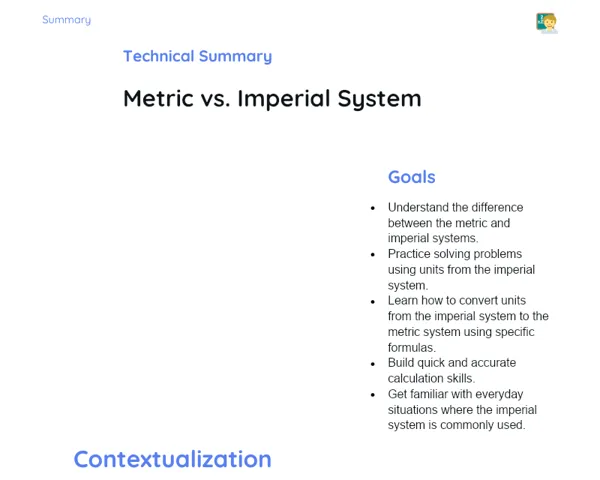Summary Tradisional | Polygons: Classification
Contextualization
Polygons are basic geometric figures that we come across in many aspects of our daily lives. They are flat shapes made up of line segments that join at their endpoints, giving rise to various figures with different numbers of sides and angles. From the simple triangles and squares we first learn about to more intricate shapes like hexagons and octagons, polygons are found everywhere—in the items we use and in the structures we see around us.
Learning about polygons is crucial not only for a grasp of geometry but also for practical applications in fields such as architecture, design, and engineering. For instance, many common objects such as tiles, traffic signs, and even certain design elements in art and buildings are based on polygonal shapes. In nature too, we can observe amazing examples like the honeycombs of bees, which are made up of regular hexagons. Being able to identify and understand polygons enables us to interpret and appreciate the world around us better.
To Remember!
Definition of Polygons
Polygons are flat figures made by connecting line segments at their endpoints. Each of these segments is known as a side, and the point where two sides meet is called a vertex. We classify polygons by the number of sides they have, making them a key subject in geometry. Their properties are not only of academic interest but also have practical uses in everyday situations and professional fields.
Simply put, a polygon is a closed figure consisting solely of straight line segments meeting only at the endpoints. This means that curves or open figures do not qualify as polygons. The number of sides defines basic categories like triangles, quadrilaterals, pentagons, and so on.
Having a solid understanding of what a polygon is, helps in categorising them correctly and in exploring various mathematical properties. This understanding is also handy when spotting these shapes in practical scenarios, such as in the design of buildings or everyday objects.
-
Polygons are flat figures formed by line segments.
-
The line segments are called sides, and their meeting points are called vertices.
-
A figure must be closed, with only straight sides, to be considered a polygon.
Classification by Number of Sides
The primary way to classify polygons is by counting their sides. This classification is key to identifying and studying the specific attributes of each kind of polygon. For example, a three-sided polygon is called a triangle, while a four-sided one is known as a quadrilateral. With an increase in the number of sides, the names change accordingly, such as pentagon (5 sides), hexagon (6 sides), heptagon (7 sides), octagon (8 sides), and so forth.
Knowing how to classify polygons by the number of sides not only lets us name them but also helps us understand their geometric properties. For instance, the sum of internal angles in a polygon depends on the number of sides. A triangle always has internal angles summing to 180 degrees, while that of a quadrilateral is 360 degrees. This relationship is given by the formula: (n-2) * 180 degrees, where n represents the number of sides.
Moreover, such classification is very useful in practical applications, especially in pattern designing and constructing architectural structures. Understanding the various shapes and their properties enables professionals to craft designs that are both functional and visually appealing.
-
Polygons are classified by the number of sides: triangle (3 sides), quadrilateral (4 sides), pentagon (5 sides), etc.
-
The sum of the internal angles varies with the number of sides, following the formula (n-2) * 180 degrees.
-
This classification is very helpful for design, architecture, and other practical applications.
Regular and Irregular Polygons
Polygons are further divided into regular and irregular types, depending on whether all sides and internal angles are equal or not. A regular polygon is one where all sides and angles are the same. Common examples include the equilateral triangle (with all sides and angles equal) and the square (with equal sides and angles throughout).
On the other hand, a polygon is termed irregular when its sides and internal angles differ. For example, a scalene triangle has all sides of different lengths, and a trapezoid typically has only one pair of parallel sides.
This distinction between regular and irregular polygons is important for studying their properties. Regular polygons often display symmetry and predictable characteristics, making them popular in decorative designs and structural planning. Irregular polygons, despite their varied shapes, are equally important in many practical scenarios.
-
A polygon is regular if all its sides and internal angles are identical.
-
Irregular polygons have sides and angles that can differ significantly.
-
Recognising the difference helps in understanding both the geometric traits and the practical applications of these shapes.
Properties of Polygons
Polygons come with several important mathematical properties that are key to both theoretical geometry and its real-world applications. One of the primary properties is the sum of the internal angles, which can be calculated using the formula (n-2) * 180 degrees, where n is the number of sides. For example, a triangle always has internal angles that add up to 180 degrees, while a quadrilateral’s internal angles sum to 360 degrees.
Another significant property is the relationship between a polygon’s sides and its angles. In regular polygons, the equal sides and angles lead to a pleasing symmetry—a feature that is often exploited in architecture and design to produce balanced and appealing structures.
Additionally, knowing how to calculate the area and perimeter of a polygon is very useful. For instance, the area of a triangle can be found by multiplying its base with its height and then dividing by two, while the perimeter is simply the total length of all its sides. These calculations are not only important in academics but are also applied in fields like construction and engineering.
-
The sum of a polygon's internal angles is given by the formula (n-2) * 180 degrees.
-
Regular polygons have all sides and angles equal, ensuring symmetry.
-
Understanding area and perimeter is crucial for both academic problems and practical scenarios.
Key Terms
-
Polygon: A flat geometric figure made up of line segments that meet at endpoints.
-
Side: A line segment that forms part of a polygon.
-
Vertex: The point where two sides of a polygon meet.
-
Triangle: A three-sided polygon.
-
Quadrilateral: A four-sided polygon.
-
Pentagon: A five-sided polygon.
-
Hexagon: A six-sided polygon.
-
Regular Polygon: A polygon with all sides and angles equal.
-
Irregular Polygon: A polygon with sides and angles that are not all equal.
-
Sum of Internal Angles: The total measure of all internal angles in a polygon, calculated by (n-2) * 180 degrees.
Important Conclusions
Polygons are important figures in geometry, made up of line segments joining at vertices. Classifying them by the number of sides—like triangles, quadrilaterals, and pentagons—helps us understand their properties, such as the sum of internal angles. In addition, being able to distinguish between regular and irregular polygons is vital for recognising their symmetry and appreciating their applications in fields like architecture and design.
A clear grasp of a polygon's properties, including the relationships among sides, angles, area, and perimeter, is essential for solving geometric problems. Regular polygons, with their balanced features, are often used to create harmonious designs, while irregular polygons contribute to the variety and creativity seen in many practical contexts.
It is important for students to explore these concepts further, as the study of polygons not only enhances theoretical knowledge but also has practical implications—from the layout of our homes and public spaces to the natural designs observed in the world around us.
Study Tips
-
Review the definition and classification of polygons, paying special attention to the number of sides and the differences between regular and irregular shapes.
-
Practice solving problems related to the sum of internal angles using the formula (n-2) * 180 degrees.
-
Keep an eye out for polygons in everyday surroundings, and try to identify and classify them as regular or irregular.



